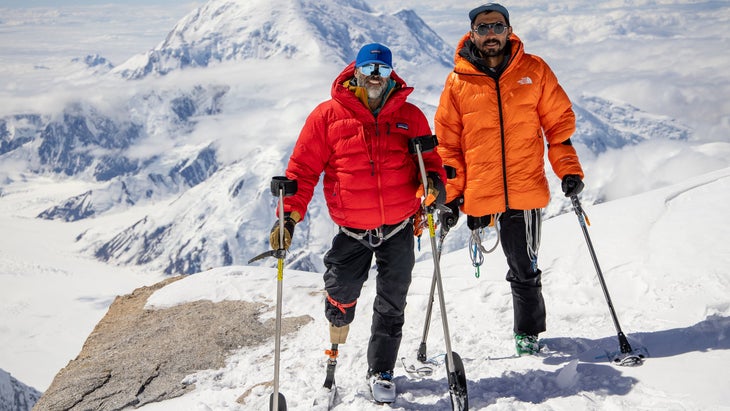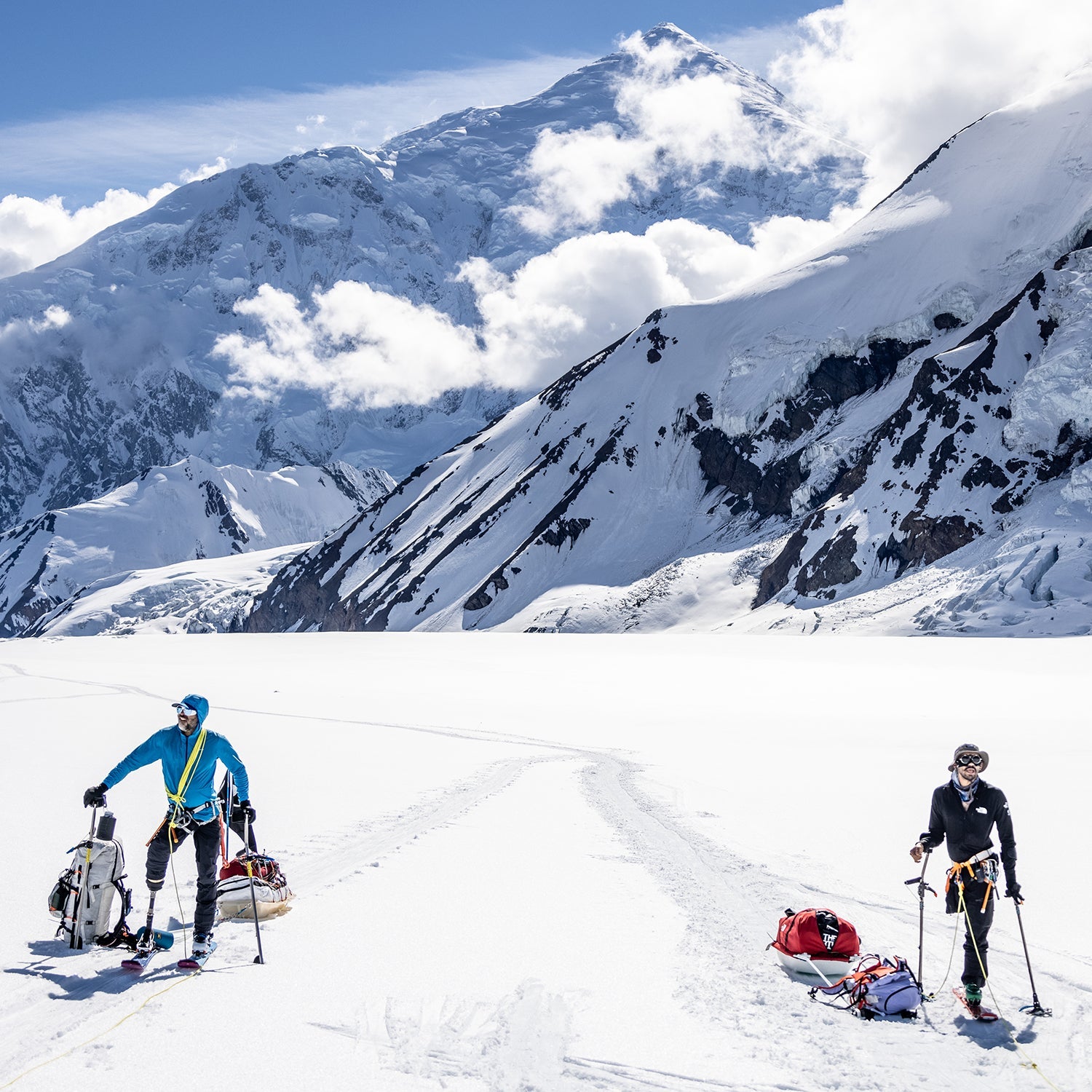While plenty of adaptive athletes have summited Denali, and are pretty certain they’re the first to ski it. (There is no definitive record keeper for adaptive-athlete mountaineering feats.) The two men, who are both amputees, summited and skied the 20,310-foot Alaskan peak on June 20. Their six-man team,��which included mountaineers and filmmakers ,��, , and Ben Farrar, was comprised of nearly all —o�Ա��� had made the climb before.
“These First Disabled Descents aren’t about me or Pete or any one individual person,” says Sojitra. “FDDs showcase and represent the power we as Disabled people have when provided access to opportunities and resources.”
Sojitra, a 29-year-old based in Bozeman, Montana, has been steadily ticking off impressive objectives, including the first disabled descent of earlier this year, all while advocating for a more inclusive and diverse outdoor community. McAfee, a 38-year-old radiology technician who is based in Medford, Oregon, and is a father of two, began climbing and skiing peaks about five years ago when he became, as he puts it, completely obsessed—particularly with the uphills.
“Vasu is an incredibly talented skier, and Pete is an animal on the uphill,” says Roepke. “I have footage of him pulling 180 pounds of gear up with a prosthetic leg on and a pirate flag flying off the back.”
The group arrived at 14,000 feet during a high-pressure window, but by the time they had acclimatized, storms had descended. After eight days in camp, they were uncertain whether they’d get a long enough break in the low-pressure system to make their summit push. So when a short, iffy window opened up, they went for it.
“We walked from 14,000 feet to 17,000 in a Ping-Pong ball,” says Roepke, describing the thick fog. They woke the next day to high clouds but managed to summit around 10 p.m. via the West Buttress.

“There was always some doubt,” says McAfee. “I think I was the least experienced guy on the crew. But I wanted to test myself and see if I could grit this thing out. I trained like a madman all winter.” Roepke and Retzlaff never had much doubt about McAfee, though: they first climbed with him during a , and he dragged them up Mount Shasta, in California, faster than either of them had ever summited the 14,162-foot peak.
Ski conditions on Denali this year were the worst they have been in a decade. A thin snowpack meant that many of the classic descents, including Rescue Gully and the Messner Couloir, were unskiable. The team opted to descend just below their climbing route, on the Autobahn face. “We skied every possible skiable slope on the West Buttress route this season,” says Roepke.
Incoming storms urged the group to move quickly off the mountain. A straight 24-hour push brought them from the summit down to the airstrip at the 7,300-foot Kahiltna base camp. With high winds forecast, they were concerned they’d miss their opportunity to catch a flight out.
“The last two miles I was redlining, pushing as hard as I’ve pushed for a long time,” says Roepke. “It was the fastest I’ve ever moved on a rope team.”
The group successfully made it back to the lower 48, where they’re resting and sifting through footage and photos to put together a short documentary about the trip. Keep an eye out for the film in 2022.


